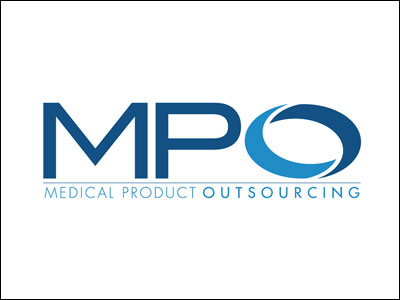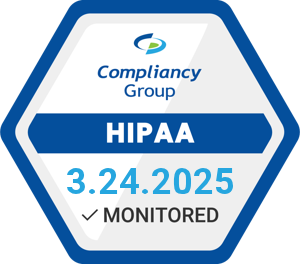September 26, 2024
Unlike pharmaceuticals (pills and injectables), medical devices come in all different shapes, sizes, forms, and price points—from bandages to robotics and software as a medical device (SaMD). The breathtaking innovation that drives continual shape-shifting in the medical device industry is the same driver of endless change in clinical trials, regulatory review, market access, go-to-market models, formulary acceptance, pricing strategies, and payer reimbursement. SaMD is one of the most novel new medical device products entering the marketplace today, but it has the least clear path to commercialization. These are also often referred to as digital-based medical devices or digital therapeutics (DTx).
DTx have a particularly murky roadmap because there is still no infrastructure in place, and they are not well-understood by clinicians, payers, and patients. For this reason, health economics outcomes research (HEOR) is so important because, put simply, money talks. The companies that incorporate this data capture in their clinical trials conclude their research not only with validation of safety and efficacy but also with the financial impact of the product on the broader healthcare system.
Safety and Efficacy Aren’t Enough
Over the last decade, prescription digital therapies have proven their medical value. Specifically, DTx products have played a significant role in the effective management of a variety of mental health issues, including substance abuse, sleep disorders, depression, ADHD, and others. According to the World Health Organization, nearly 1 billion people worldwide live with a mental health disorder yet three-quarters of these individuals receive no treatment, either because of a lack of access to care or the stigma surrounding their condition.1 Digital therapeutics are closing this gap—providing more and better options, as well as convenient and discreet access to care for those in need.
DTx have also proven effective complementary therapies to traditional drugs to treat chronic conditions, including sleep disorders and pain management. For example, Swing Therapeutics recently completed a phase 3 trial with positive results, leading to FDA approval for Stanza—a self-guided, smartphone-based therapy to treat fibromyalgia, a chronic and debilitating pain condition that affects more than 10 million Americans.2 Stanza provides an easily accessible behavioral therapy option that can be used alongside medication, physical therapy, and other standard-of-care treatments.
“One of the exciting things about new technology as well as one of the challenges is that it really opens up new ways to develop products,” said Mike Rosenbluth, Ph.D., CEO at Swing Therapeutics. “How can we adapt those processes for the new intervention, as many of the processes of developing a drug are not relevant for digital-based medical device products or DTx. So, we’re committed to evidence development and demonstrating that our products are clinically effective—the industry needs to build on a solid foundation of evidence so that digital therapies can be adopted as standard of care.”
Yet, despite DTx effectiveness, healthcare professionals have been slow to prescribe or recommend them to patients. The reasons for this are complex and multifaceted. The lack of widespread knowledge and understanding about DTx products among clinicians, as well as complications with prescribing these therapies, various administrative challenges, and insufficient insurance coverage have all added to the challenges of getting these treatments into the hands of those who they can help.
Clearly, producing safe and effective DTx products that improve outcomes for patients is not enough. The road to viability is longer and more daunting. One solution can be found in the health economic value of DTx products. The more companies can prove both safety and efficacy as well as value, the better opportunities they will ultimately have at improving market access, payer coverage, and clinician and patient adoption.
As healthcare costs continue to rise, payers are concerned with health outcomes and cost-effectiveness. This is particularly so for less-understood digital therapeutics. It’s critical to capture evidence of the value of these innovations, both as it pertains to individual patients in certain therapeutic areas as well as its impact on the broader population.
“Targeted clinical trial, economic, and real-world data will drive adoption of DTx products,” Andy Molnar, CEO of the Digital Therapeutics Alliance, a trade organization focused on the needs of the clinically validated digital therapeutics industry. “Capturing the right data that proves to all stakeholders—government, commercial insurers, medical directors, providers, and patients—to adopt these products, however, is complex. It is even more daunting for DTx startups that may not have the same resources as pharmaceutical companies.”
Case in Point: MedRhythms
MedRhythms, a rapidly growing digital-based medical devices company, recognized the importance of capturing HEOR data from day one. MedRhythms pioneered a neurotherapeutic designed to improve walking, mobility, and related functional outcomes by using a proprietary, patented technology platform that combines sensors, software, and music with advanced neuroscience to target neural circuitry. The company is developing a pipeline of digital therapeutics across a range of neurological conditions, including stroke, multiple sclerosis, and Parkinson’s disease.
The company worked with Curavit to investigate long-term patient adherence, response durability, and healthcare economic value of its novel neurorehabilitation system to improve walking in adults with chronic stroke walking deficits. The study—known as OrcHESTRAS (Outcomes and Health Economics of Stroke using Rhythmic Auditory Stimulation)3—is a prospectively enrolled study, with a novel design that focuses on evidence generation and exploration of a product’s impact on reducing the financial impact on the U.S. healthcare landscape.
“A cornerstone of our mission is that our products must be accessible to patients. One way we do that is through furthering our evidence development,” said Owen McCarthy, president and co-founder of MedRhythms. “We need to speak the same language as payers in order to gain traction for a new prescription-only product just as much as we need to demonstrate efficacy to providers.”
Four Reasons to Incorporate HEOR in Clinical Research
- Market Access for Reimbursement: One of the biggest impediments to commercial acceptance and clinician prescribing of digital-based medical devices is the lack of both private and government reimbursement. However, with HEOR evidence illustrating it can lower an insurer’s overall cost, more patients will gain access to the option.
- Regulatory Acceptance: While many products are first approved or cleared for one indication, they have the potential to be used across several indications. However, before they can be used for additional treatments, more evidence is required. MedRhythms’ device is approved for stroke based on a 12-week study but is now involved in a 12-month study to capture more regulatory data and HEOR data. That HEOR and efficacy data captured over a longer period shows durability in existing applications as well as demonstrating the potential for other indications.
- Product Development: Since HEOR data is typically captured over months rather than weeks, it provides developers with greater insight into the device’s everyday use over time. How easy is it to use? How easy is it to recharge? These are usability characteristics that wouldn’t necessarily be tracked in a clinical trial, but a longer-term HEOR trial helps to capture more nuanced information about the device to inform future product improvement.
- Influence on Reimbursement (at the federal level): HEOR data offers crucial evidence that can impact government policies and federal agencies to help improve the industry overall and pave the way for the adoption of these devices. HEOR demonstrates the economic benefit of digital-based medical devices or DTx as additive/supplemental therapies to existing therapies and drugs. HEOR proves the economic advantages of adding these devices into the therapy regimen as well as their benefits as standalone options.
Save the System
It’s no secret the U.S. healthcare system is hemorrhaging dollars while also failing to provide requisite care for all Americans. Rising costs of labor, drugs, medical supplies, and equipment mean that over the next six years, annual health expenditures in the U.S. are expected to increase from $4 trillion to $8.3 trillion.4 This surge—combined with lower reimbursement rates, financial challenges from the pandemic, and aging infrastructure—means approximately 30% of U.S. rural hospitals are at risk of closure.5 Implications would include reduced access to care, patients traveling further for care, and potential delays in treatment. In turn, Americans are facing an affordability crisis; the average premium for an employer-sponsored family health insurance policy reached $22,221 in 2021.6
In addition to the self-serving reasons for incorporating HEOR data capture and analysis in medical device clinical trials, it can also contribute to saving an ailing healthcare system for all. Consider this: an at-home FDA-cleared ECG monitor such as KardiaMobile plus a smartphone can monitor for early signs of heart failure, not only thwarting would-be heart attacks but also the high costs of emergency room visits. Further, compared to the $3,000 to $10,000 cost of testing at a medical facility, the cost of testing using a remote ECG device is only about $200.7 That reduces the cost of testing for patients, providers, and payers.
Any medical device—digital or otherwise—that supports staying at home or prevention has a dramatic impact on the financial health of the broader medical community. After all, more hospitals are trialing the hospital-at-home concept, but this is only feasible if the costs support it. Johns Hopkins reports a savings of 19% to 30% when compared to in-hospital care.8 It’s yet another critical reason to incorporate HEOR data capture into clinical trials, especially longer trials.
References
- tinyurl.com/mpo241021
- tinyurl.com/mpo241022
- tinyurl.com/mpo241023
- tinyurl.com/mpo241024
- tinyurl.com/mpo241025
- tinyurl.com/mpo241026
- tinyurl.com/mpo241027
- tinyurl.com/mpo241028
Joel Morse is co-founder and CEO of Curavit, a virtual contract research organization that designs and executes decentralized clinical trials. He is an experienced operational CEO who has founded, built, and sold large global businesses in healthcare and life sciences. Previously, Morse founded C3i, a business process outsourcing healthcare provider, and built it into a global leader in tech-enabled clinical trial services, with a strategic client list that included Medidata, Quintiles, and Merck. Morse has a BS in mechanical engineering from Tufts, and an MBA from Columbia. He can be reached at joel.morse@curavitclinicalresearch.com.











